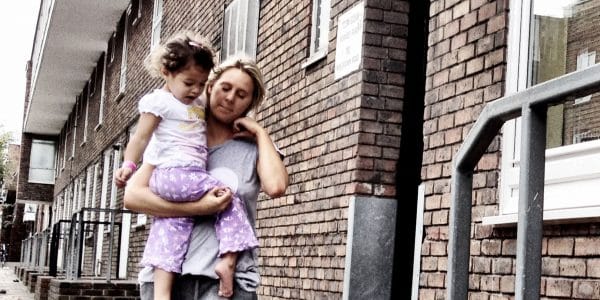Chronic lack of real wage growth has blighted the UK since the financial crisis of the late 2000s. Many of the lowest-earning employees have bucked that trend due to the minimum wage. Between 2011 and 2019, the earnings of low-earning employees grew twice as fast as median earnings.
But even among the lowest earners, a growing fraction are missing out. A quarter of the lowest fifth of earners are now self-employed. They are not covered by the minimum wage.
Over the last 40 years, the UK has seen a period of rising earnings inequality much greater than in most developed countries up to the global financial crisis, immediately followed by a long period of stagnation in productivity and real wages, hitting the living standards of most workers hard.
During the 2000s, the living standards of low earners were protected in part by the newly introduced minimum wage, but much more dramatically by the huge expansion of tax credits. More recently, big increases in the minimum wage have raised their earnings, but cuts in tax credits have more than offset the gains, at least for the poorest working households.
The 2020s pose wider challenges in the labour market, not least persistent wage stagnation and the expansion of non-traditional forms of work. The policy cupboard beyond tax credits and minimum wages is bare.
These are key findings in new work for the IFS Deaton Review of Inequalities, funded by the Nuffield Foundation and published today.
There are two growing problems:
- We still do not have tools for boosting earnings of any other than the low-paid. Compared at the same age, median earnings for those born in the 1980s are no higher than they were for those born in the 1960s. This spells the end of the long growth in median living standards, creates intergenerational inequalities and threatens social mobility. Thinking how to design policies to redress this are vital to the economic and social health of the nation.
- Even among those on the lowest earnings, there is a growing group in non-traditional forms of employment which is harder to reach effectively (or, in the case of minimum wages, to reach at all) through tried-and-tested policies. About one in four of the lowest-earning fifth of workers are now self-employed – a fraction that has increased by 50% in 20 years.
The new work shows how large an effect two policy tools have had in shoring up the incomes of low-earning people and families:
- The minimum wage now directly covers 2 million people, or 7% of all employee jobs, compared with 1.5 million in 2015, before the current National Living Wage was introduced. It is double the proportion of employees covered when the minimum wage was introduced in 1999. Hundreds of thousands more have had their wages boosted indirectly as firms maintain pay differentials and apply adult rates to younger workers. Its real value for those aged 25+ has increased by 60% since 1999 and 20% since 2015.
- It has played a key role in boosting earnings for employees at the bottom of the distribution. Between 2011–12 and 2019–20, real weekly earnings (among employees) grew by more than 20% at the 10th percentile – but by less than 10% at the median.
- In 2019–20, household earnings at the 10th percentile (among households with someone in paid work) were 17% higher than in 1994–95, but their total disposable incomes were 32% higher. That largely reflects a big increase in tax credits. It meant that the total incomes of the lowest-earning households kept pace with those of middle earners, even though their earnings grew only half as fast.
- The reliance on benefits and tax credits has perhaps been illustrated even more starkly by what happened when they were cut back during the austerity of the 2010s. Since 2011, the earnings of low-income households have been growing more quickly than they grew between 1994 and 2011. Yet their income growth has slowed as benefits and tax credits have been cut back.
Stephen Machin, Professor of Economics and Director of the Centre for Economic Performance at LSE, said:
“Higher earnings inequality, with low real earnings growth, and a very different labour market from 40 years ago have placed the world of work in a much more unequal place. To halt or reverse this trend requires that significant attention be devoted to ways to restore and reinvigorate real earnings growth and to generate decent jobs with good career opportunities in an inclusive way.”
Robert Joyce, Deputy Director at IFS, said:
“Over much of recent history we have seen shockingly little productivity growth. Yet many of those on modest earnings have seen incomes hold up better than we might have expected. This is due to two policies which have essentially increased their incomes by brute force: first (mainly) tax credits, and then (mainly) higher minimum wages. Those policies succeeded in doing a lot of what was intended of them. But they cannot forever carry the can on their own. Not only will they both have limits, ultimately, in how far they can be pushed; they are also fundamentally limited in scope. They cannot help average earners, who continue to see worrying wage stagnation, and minimum wages cannot help the growing group in self-employment. While it is easier said than done, we must find additional ways of restoring widespread earnings growth.”
Mark Franks, Director of Welfare at the Nuffield Foundation, said:
“Policies such as the minimum wage and tax credits have helped many low earners, but they have not been sufficient to fully protect all low-paid workers, including those among the growing number of self-employed. This, in combination with sluggish pay growth and factors such as rising prices and a lack of access to stable housing, has left many individuals and families in vulnerable circumstances. Increasing productivity growth and reducing economic disparities between different parts of the country would make a positive difference in the long term, but needs to be part of a broader approach that addresses the multiple inequalities that intersect to determine people’s financial security and wider well-being. The IFS Deaton Review has an important role to play in considering how these multiple inequalities arise, why they matter and how they should be addressed.”






















































